
How to Use adaptor 12v: Examples, Pinouts, and Specs
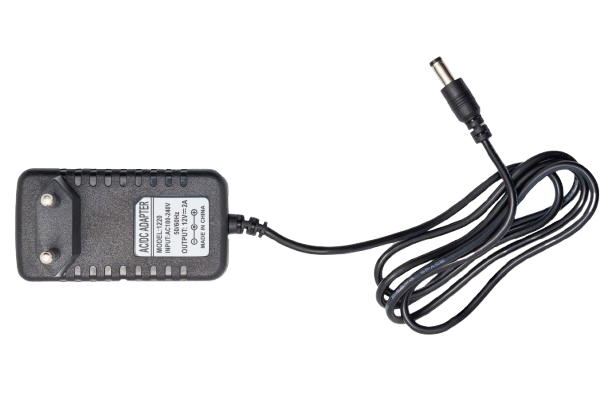
 Design with adaptor 12v in Cirkit Designer
Design with adaptor 12v in Cirkit DesignerIntroduction
The Adaptor 12V by Power (Manufacturer Part ID: Power) is a versatile device designed to convert electrical power from a standard wall outlet (typically 110V or 220V AC) to a stable 12V DC output. This adaptor is widely used to power a variety of electronic devices, including routers, LED strips, small appliances, and DIY electronics projects.
Explore Projects Built with adaptor 12v
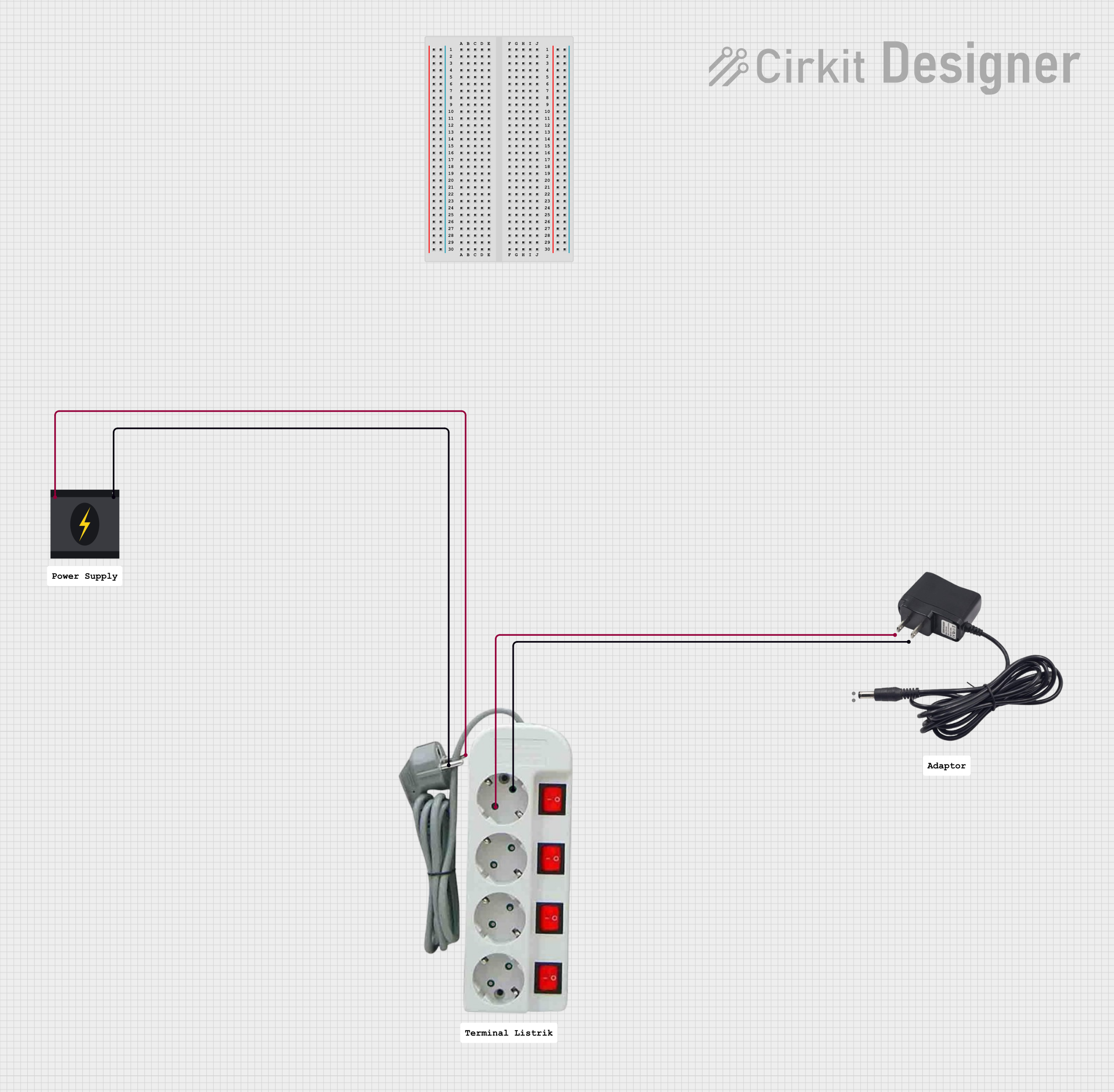
 Open Project in Cirkit Designer
Open Project in Cirkit Designer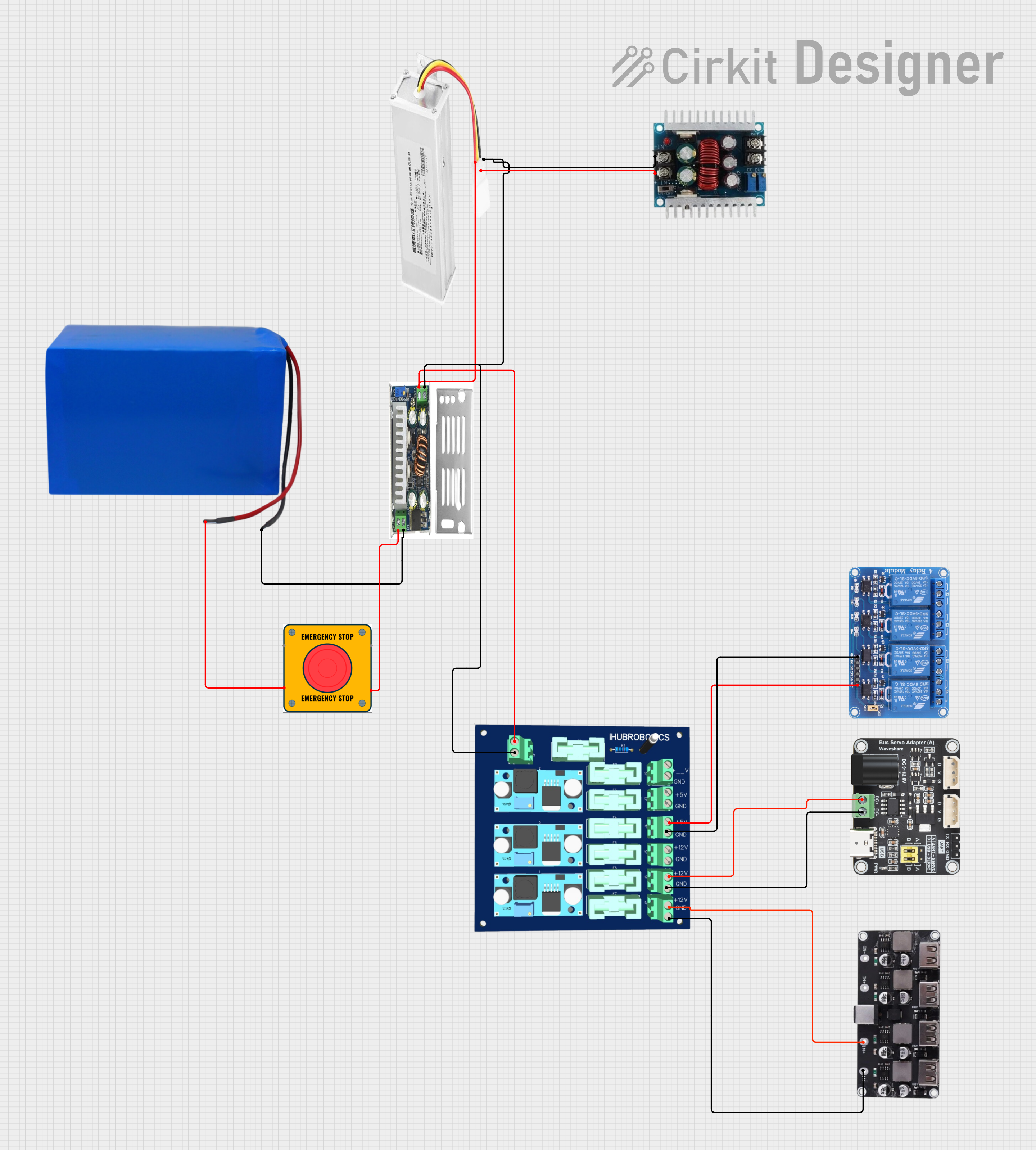
 Open Project in Cirkit Designer
Open Project in Cirkit Designer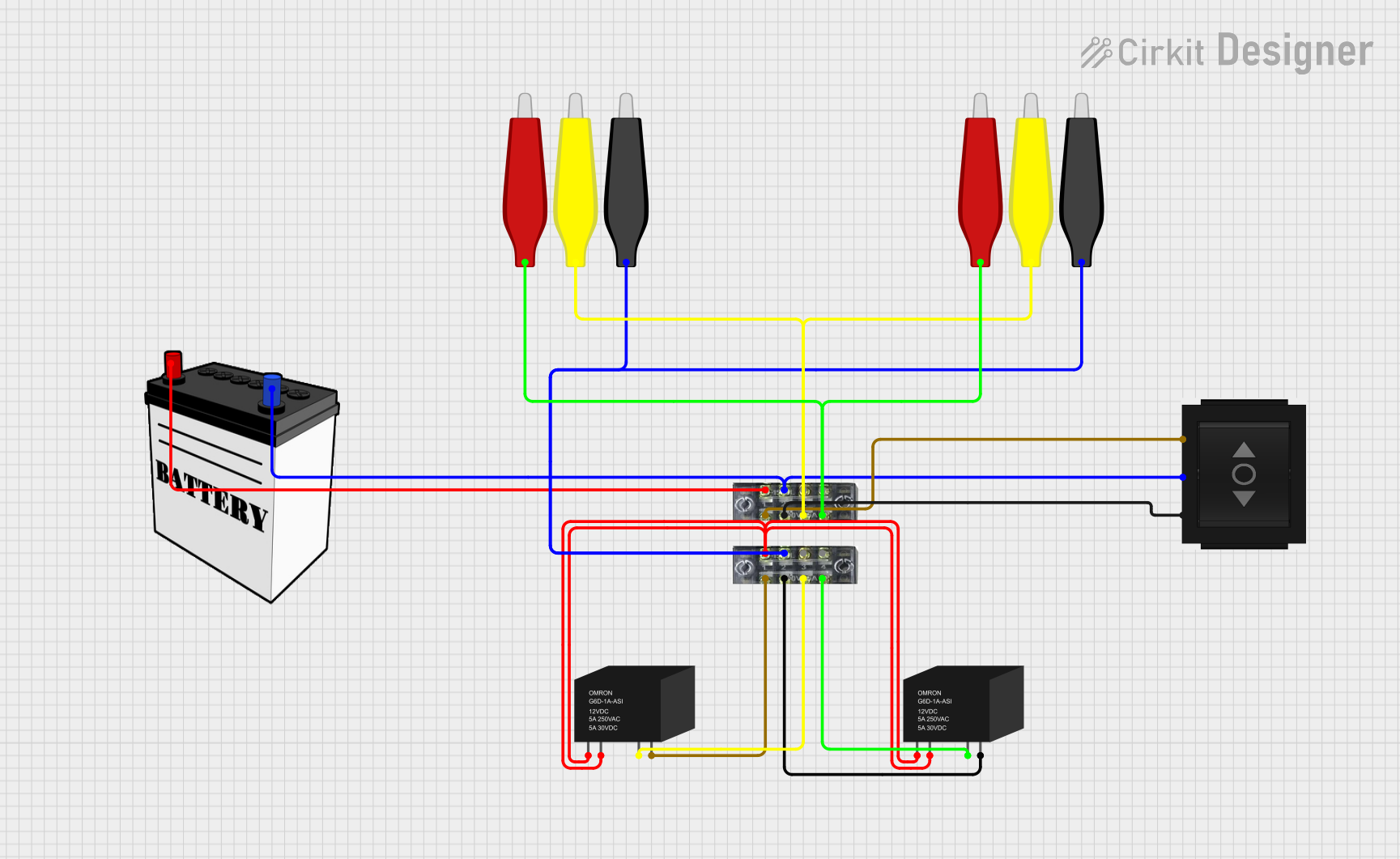
 Open Project in Cirkit Designer
Open Project in Cirkit Designer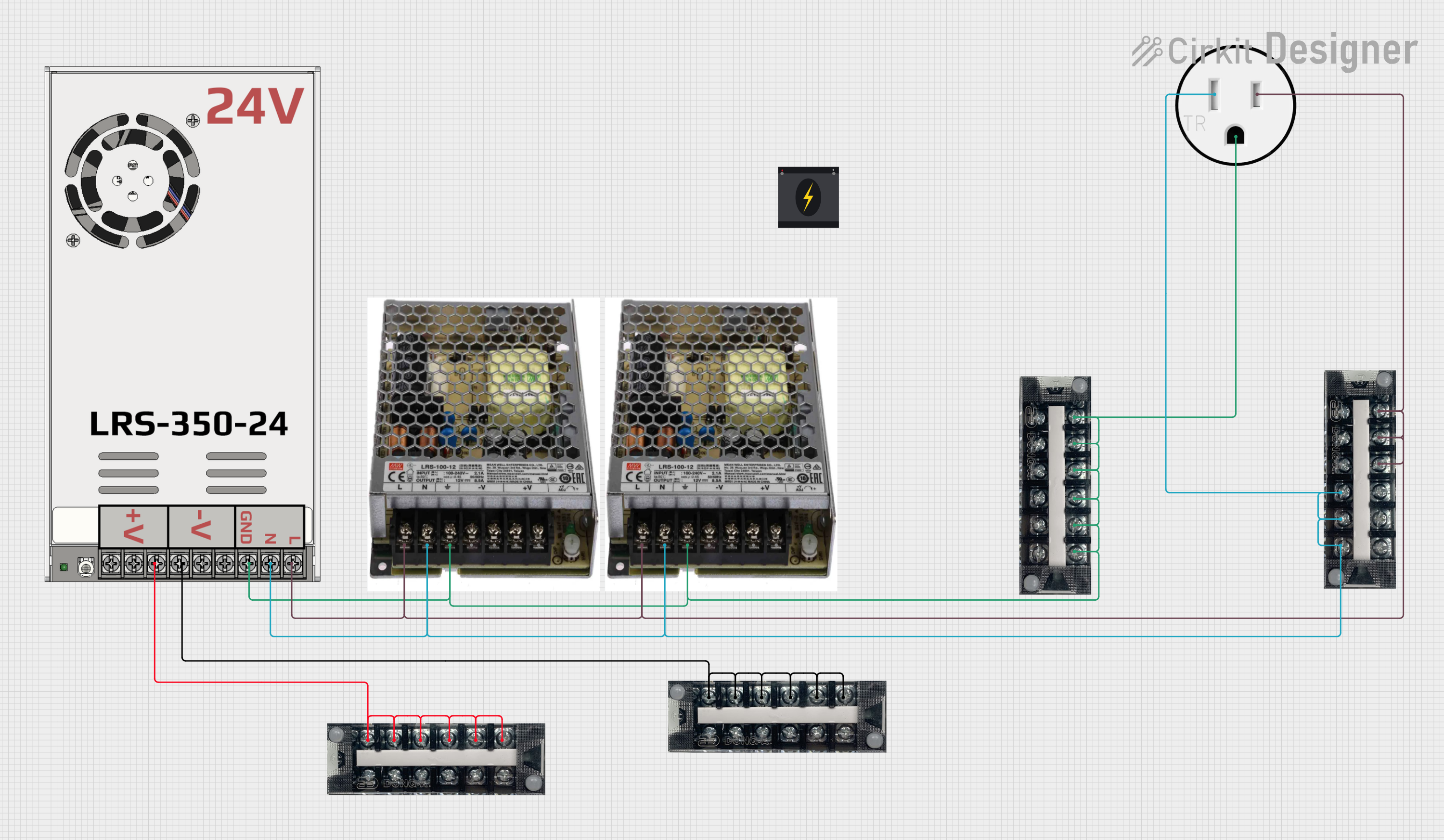
 Open Project in Cirkit Designer
Open Project in Cirkit DesignerExplore Projects Built with adaptor 12v

 Open Project in Cirkit Designer
Open Project in Cirkit Designer
 Open Project in Cirkit Designer
Open Project in Cirkit Designer
 Open Project in Cirkit Designer
Open Project in Cirkit Designer
 Open Project in Cirkit Designer
Open Project in Cirkit DesignerCommon Applications and Use Cases
- Powering home networking equipment such as routers and modems.
- Supplying power to LED lighting systems.
- Driving small DC motors or actuators in hobbyist projects.
- Providing a stable power source for Arduino or Raspberry Pi projects.
- Charging or powering portable devices that require 12V DC input.
Technical Specifications
The following table outlines the key technical details of the Adaptor 12V:
| Parameter | Specification |
|---|---|
| Input Voltage | 100-240V AC, 50/60Hz |
| Output Voltage | 12V DC |
| Output Current | 1A, 2A, or 5A (varies by model) |
| Power Rating | Up to 60W (depending on model) |
| Connector Type | Barrel Jack (5.5mm outer, 2.1mm inner) |
| Polarity | Center Positive |
| Efficiency | ≥ 85% |
| Operating Temperature | 0°C to 40°C |
| Storage Temperature | -20°C to 70°C |
| Safety Certifications | CE, FCC, RoHS |
Pin Configuration and Descriptions
The Adaptor 12V typically uses a barrel jack connector. The pin configuration is as follows:
| Pin | Description |
|---|---|
| Outer Sleeve | Ground (GND) |
| Inner Pin | +12V DC (Positive Voltage) |
Usage Instructions
How to Use the Adaptor in a Circuit
- Verify Compatibility: Ensure the device you are powering requires a 12V DC input and that the current rating of the adaptor matches or exceeds the device's requirements.
- Connect the Barrel Jack: Insert the barrel jack connector into the power input port of your device. Ensure the polarity matches (center positive).
- Plug into Wall Outlet: Connect the adaptor to a standard AC wall outlet.
- Power On: Turn on the device, if applicable, and verify that it operates correctly.
Important Considerations and Best Practices
- Polarity Check: Always confirm the polarity of the barrel jack matches the device's requirements. Reversed polarity can damage your device.
- Current Rating: Do not exceed the maximum current rating of the adaptor. For example, if the adaptor is rated for 2A, ensure the connected device does not draw more than 2A.
- Ventilation: Ensure the adaptor is used in a well-ventilated area to prevent overheating.
- Avoid Overloading: Do not connect multiple devices to a single adaptor unless the combined current draw is within the adaptor's rating.
- Arduino Example: The Adaptor 12V can be used to power an Arduino UNO via the DC barrel jack. Below is an example of how to use it:
// Example: Blinking an LED using Arduino UNO powered by a 12V adaptor
// Connect the 12V adaptor to the Arduino UNO's DC barrel jack.
// Ensure the adaptor's output is 12V DC and center positive.
const int ledPin = 13; // Pin 13 is connected to the onboard LED
void setup() {
pinMode(ledPin, OUTPUT); // Set pin 13 as an output
}
void loop() {
digitalWrite(ledPin, HIGH); // Turn the LED on
delay(1000); // Wait for 1 second
digitalWrite(ledPin, LOW); // Turn the LED off
delay(1000); // Wait for 1 second
}
Troubleshooting and FAQs
Common Issues and Solutions
Adaptor Not Powering the Device
- Cause: Incorrect polarity or loose connection.
- Solution: Verify the polarity of the barrel jack and ensure a secure connection.
Device Not Functioning Properly
- Cause: Insufficient current supply.
- Solution: Check the current rating of the adaptor and ensure it meets the device's requirements.
Adaptor Overheating
- Cause: Overloading or poor ventilation.
- Solution: Reduce the load on the adaptor and ensure it is used in a well-ventilated area.
Adaptor Not Turning On
- Cause: Faulty wall outlet or damaged adaptor.
- Solution: Test the wall outlet with another device. If the outlet works, replace the adaptor.
FAQs
Q: Can I use this adaptor with a 9V device?
A: No, using a 12V adaptor with a 9V device may damage the device. Always match the voltage requirements.Q: Is the adaptor waterproof?
A: No, the adaptor is not waterproof. Avoid using it in wet or humid environments.Q: Can I extend the cable length of the adaptor?
A: Yes, but ensure the extension cable is of appropriate gauge to handle the current without significant voltage drop.Q: How do I know if the adaptor is center positive?
A: Look for the polarity diagram on the adaptor label. A center positive adaptor will have a "+" symbol pointing to the center pin.
By following this documentation, users can safely and effectively use the Adaptor 12V for their electronic projects and devices.